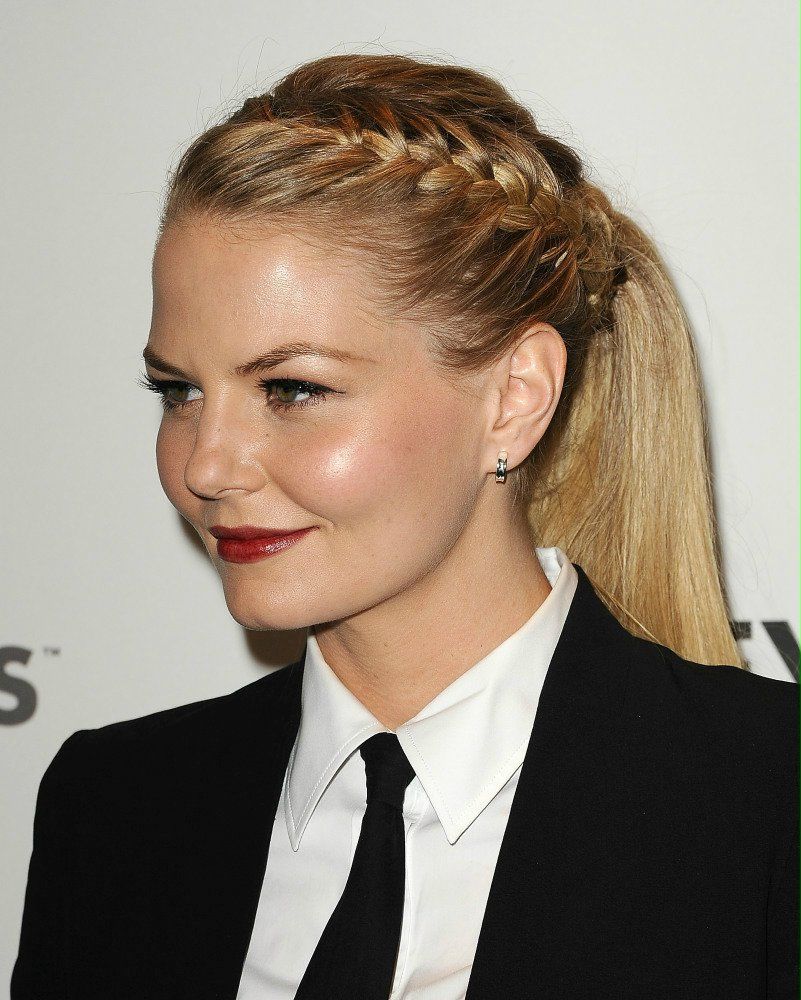A phone in hand, a familiar swipe, and then it hits. Not a memory, but a betrayal. A photo from… let’s say, 9 years ago. There I am, or rather, there *he* is. A full, vibrant head of hair, catching the light just so. The face is mine, unmistakably, but the person? That stranger in the reflection, staring back with an almost accusatory gaze right now, isn’t him. The shock isn’t about looking younger; it’s about the chasm between recognition and reality. It’s the profound disconnect that rattles you to the bone, a deep, unsettling sense that something essential has been plucked away, leaving an echo where a living presence used to be. You look in the mirror, and a silent question forms, sharp and insistent: *Who are you?*
You’re not mourning your youth; you’re mourning the familiar continuity of your own face.
This isn’t about chasing eternal youth, as dismissive narratives often suggest. It’s far more fundamental. It’s about the unexpected erosion of self-image, a crisis of continuity that most of us are ill-equipped to handle. We’re taught to accept the march of time, to embrace “graceful aging.” But what if aging doesn’t feel graceful? What if it feels like a subtle, insidious theft, robbing you not of years, but of your very visual identity? My own mistake, and one I confess freely, was to initially categorize hair loss as a predictable biological clockwork, a mere cosmetic inconvenience. I’d offered platitudes, the easy shrug: “it happens.” It felt less confrontational than acknowledging the profound psychological disruption simmering beneath the surface. It’s a convenient fallacy, a comfortable lie we tell ourselves, that our identity is purely internal, immutable, impervious to the whims of biology. But when a defining characteristic, one that has been present for 239 days in a year, year after year, suddenly recedes, that internal certainty wavers.
The Artistry of Identity
I think of Stella N., a brilliant food stylist I know, whose work is an intricate dance between flavor and presentation. She once told me about her greatest challenge: capturing the *soul* of a dish. Not just the ingredients, but the anticipation, the memory it evokes. She’d spend hours arranging a single sprig of rosemary, not for its visual impact alone, but because it completed the story, the narrative of the plate. Her hands, usually so precise, began to tremble a few years back, not from age, but from anxiety. She was losing her hair, and with it, she felt she was losing her own narrative. “It’s like,” she’d confessed over a perfectly plated tart, the very picture of composure, “someone keeps taking the garnish off *my* life. It’s still me, technically, but the artistry, the *finishing touch*, is gone. And without it, I feel incomplete, almost… un-plated.” Her voice, usually brimming with creative energy, had a raw, exposed edge to it, like a dish served without its essential sauce.
Her struggle wasn’t about vanity. It was about authenticity. How could she imbue a dish with spirit if her own spirit felt diminished, disjointed? For Stella, her hair had always been an extension of her creative identity – a dynamic, expressive frame for her intense gaze, her quick, insightful smile. As it thinned, her focus shifted from the exquisite composition of a meal to the careful composition of her own appearance, a desperate attempt to reconstruct a sense of familiarity. This often meant opting for intricate headscarves or hats for public appearances, not as a choice of style, but as a deliberate act of concealment. It was a conscious effort to present a version of Stella that felt less fragmented, less exposed. She spent nearly $979 on various topical treatments before she realized the problem wasn’t solely external; it was internal. Her confidence, her sense of sharp, creative identity, was diminishing with every strand she found on her pillow. She wasn’t Stella the food stylist anymore; she was Stella, the woman hiding under a scarf. Her artistry, her ability to compose, felt compromised because her own composition felt fragmented.
This disorienting effect is more common than we admit, impacting perhaps 49% of men and a significant number of women by age 50. Yet, we sweep it under the rug of “vanity.” Why? Because it’s uncomfortable to acknowledge that our identity, that elusive, internal sense of who we are, is so deeply intertwined with our external presentation. We want to believe identity is purely internal, immutable, impervious to the whims of biology. But the reality is, our physical self provides the consistent visual anchors for our internal narrative. When these anchors shift unexpectedly, the mind struggles. It’s akin to having a cherished photograph subtly retouched, altering familiar details until it no longer feels entirely “right.” You know it’s *supposed* to be you, but the resonance, the immediate recognition, is gone. It creates a low-frequency hum of discord that never quite fades, a constant whisper of “something’s off.”
The conventional wisdom that hair loss is merely “part of getting older” is a simplification that overlooks the profound psychological weight of the experience. It ignores the subtle, day-to-day interactions with one’s own reflection, the way a person might subconsciously avoid direct eye contact with their own image, or the creeping sensation of being overlooked, even rendered invisible, by a world that values visual cues above all else. This isn’t about superficial beauty. This is about the primal human need for self-recognition, for the comforting assurance that the face staring back is indeed *you*. When that recognition falters, a crack appears in the foundation of selfhood. It’s a silent form of grief, mourning a part of yourself that, while not physically gone, has undeniably changed beyond recognition. The process can feel alienating, a slow, uninvited transformation into someone you don’t fully identify with.
Miscommunication with Self
I remember once, I accidentally sent a highly personal text to my landlord instead of my best friend. The immediate, stomach-dropping horror wasn’t just about the content, but the sudden, unwelcome exposure, the feeling of something deeply private being misplaced, misdirected. It was a momentary breach of my personal boundaries, a jarring slip that made me question my own attentiveness, my own control over my digital self. That feeling, multiplied by a thousand, is what this experience can be like. It’s not just a physical change; it’s a loss of control over the message your face sends, a misdirection of your own identity. You didn’t choose this broadcast. This accidental revelation of an evolving self, one you haven’t fully processed or consented to, becomes a public and intensely personal burden. The miscommunication isn’t with a landlord; it’s with your own sense of self.
Our physical appearance isn’t just a container; it’s a fundamental part of our identity architecture. It’s how others recognize us, certainly, but more critically, it’s how *we* recognize ourselves. It’s the persistent visual narrative that accompanies us through life. When that narrative unexpectedly shifts, when a chapter is ripped out or drastically rewritten without our consent, it leaves a profound void. This isn’t just a cosmetic issue, like deciding whether to wear a red or blue shirt. This is like someone subtly altering the blueprint of your house, then asking you to live in it and feel entirely at home. The foundations are slightly off, the lines don’t quite connect in the way you remember. The mirror becomes a battleground, a site of constant negotiation with a stranger. Every morning, you confront the question: “Who is that?” The brain, desperately seeking patterns and familiarity, struggles to reconcile the internal self-image with the external reality. This cognitive dissonance creates a quiet, persistent stress. It’s not just an aesthetic preference; it’s a profound challenge to self-perception. It questions the very notion of a stable, continuous self over time.
The Professional’s Anguish
For Stella, this constant negotiation was particularly acute in her line of work. Every food stylist knows that presentation is a dialogue. If the stylist herself feels discomposed, how can she compose a dish that speaks of harmony and intention? She confessed that for 109 consecutive days, she found herself obsessively checking her hairline in every reflective surface, from shop windows to polished tabletops. This wasn’t professional dedication; it was personal anguish. The irony was palpable: she, who crafted exquisite visual narratives for a living, felt her own narrative unraveling. She felt trapped in a perception loop where her diminished hair overshadowed her formidable talent. She even considered changing her line of work, believing that her perceived lack of “polish” would eventually undermine her reputation, an idea that, frankly, stunned me with its injustice.
Loss of Self
Authenticity Compromised
Concealment Tactics
Beyond Vanity: A Fight for Self
Initially, I’d scoffed at friends who spent lavishly on various “remedies,” seeing it as an almost frantic grasp at fleeting youth, a superficial obsession. I’d thought, “just accept it.” But I was wrong. I was so profoundly, reductionistically wrong. What I saw as a futile fight against nature was, in fact, a desperate fight for *self*. It wasn’t about looking younger; it was about looking like *them* again. It was about seeing the person in the mirror and feeling that familiar ping of recognition, that quiet affirmation: “Yes, that’s me.” The money, the effort-it wasn’t for vanity. It was for psychological survival. For continuity. It was about reclaiming a sense of wholeness, something far more vital than simply “looking good.” The transformation isn’t just skin deep; it resonates to the very core of one’s being.
Self-Recognition
Reclaimed Identity
Re-synchronizing Self
The journey to reclaim that lost sense of self, that familiar map of who you are, often begins with a deliberate, informed decision. For many, it’s about finding experts who understand that this isn’t just about transplanting follicles, but about restoring confidence, continuity, and control. It’s about choosing to redefine the narrative, rather than simply accepting a story you didn’t write. When searching for solutions, understanding the profound impact on self-perception is key. This is where options like seeking a professional for a hair transplant become less about cosmetic alteration and more about psychological reintegration. It’s an investment, not in superficial appearance, but in the restoration of a coherent, recognizable self. It’s about saying, “I choose to recognize myself again.”
There’s a subtle but significant distinction here: this isn’t about halting the clock, but about re-synchronizing your internal self-image with your external reality. It’s about alleviating the daily psychological burden of living with an unfamiliar face. It’s about finding peace in your own skin, in your own reflection. The process isn’t a magical rewind; it’s a careful, expert-led reconstruction that prioritizes not just aesthetics, but the deep-seated human need for self-affirmation. The goal isn’t necessarily to look like a 29-year-old again, but to look like a familiar, authentic version of yourself, whatever your age. It’s about closing that gap between who you feel you are and who you see.
Reclaiming Your Narrative
The true tragedy of hair loss isn’t the graying temples or the receding hairline, but the slow, insidious erosion of self-recognition. It’s the internal whisper that says, “That’s not you anymore.” And when we frame it merely as an age-related cosmetic concern, we do a grave disservice to the millions who experience this deeper, more fundamental crisis. The real work, the profound transformation, isn’t about halting the clock; it’s about reclaiming the face that feels truly, authentically *yours*. It’s about finding your way back to that familiar, comforting continuity, where the person staring back from the reflection is, once again, someone you know, someone you recognize, someone you are. It’s about restoring the narrative that was, for too long, stolen.


